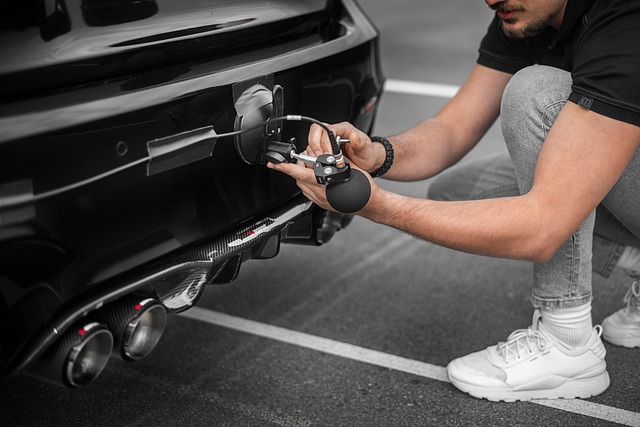Looking to register your car in California? This comprehensive guide walks you through every step, from understanding key requirements to paying fees. First, grasp the essential rules and documents needed. Then, learn how to perform a crucial dmv VIN verification process. After gathering all necessary papers, complete your registration application online or in-person. Finally, pay fees and get your plates. Simplify car registration with these clear instructions.
- Understand California Car Registration Requirements
- Gather Necessary Documents for Registration
- Perform DMV VIN Verification Process
- Complete Online or In-Person Registration Application
- Pay Registration Fees and Receive Your Plate
Understand California Car Registration Requirements

Before registering your car in California, it’s crucial to understand the state’s specific requirements for vehicle identification number (VIN) verification. The California Department of Motor Vehicles (DMV) mandates a thorough inspection process that includes a VIN check to ensure the authenticity and history of your vehicle. This involves verifying key details such as the vehicle’s make, model, year, and ownership history, all of which are accessible through a unique 17-character VIN code.
For convenience and speed, many residents opt for a mobile VIN inspection service or a vin inspection conducted by a trusted professional. Using cutting-edge technology, these services provide accurate and immediate results, allowing you to streamline the registration process. A mobile vin verifier can come to your location, perform the necessary checks, and even assist with paperwork, making car registration in California more efficient and hassle-free.
Gather Necessary Documents for Registration

Before you begin the registration process, it’s crucial to gather all the essential documents required by the California Department of Motor Vehicles (DMV). This includes your vehicle’s Registration Application (Form DVF 140), a completed Title Transfer (if applicable), and proof of insurance. One vital document is the Vehicle Identification Number (VIN) verification, which can be obtained through a DMV-approved vin inspection or mobile vin verification service.
Additionally, you’ll need to provide identification proving your residency and identity, such as a valid driver’s license and proof of California residency like a utility bill or lease agreement. It’s recommended to double-check the DMV’s website for the most up-to-date list of required documents, especially regarding specific vehicle types or circumstances.
Perform DMV VIN Verification Process

Before registering your car in California, it’s crucial to go through the DMV VIN verification process. This involves ensuring that the vehicle’s Vehicle Identification Number (VIN) is accurate and matches the details on record with the Department of Motor Vehicles (DMV). You can perform this check online or by visiting a local DMV office. The process is straightforward: you simply need to provide your VIN, along with any other required information, for verification.
One efficient way to streamline this step is through a mobile vin inspection service. These services offer convenient, on-demand verifications using a mobile vin verifier. This option is particularly beneficial if you’re dealing with a used car purchase or lease transfer, as it provides immediate peace of mind and helps avoid potential issues later down the line. Ensure that the service provider is reputable and adheres to DMV guidelines for accurate and timely VIN verification.
Complete Online or In-Person Registration Application

You can complete your California car registration either online or in-person at a DMV field office. Both options require gathering essential documents and providing accurate information. Before starting, make sure to have your vehicle’s VIN (Vehicle Identification Number) available for a crucial step known as DMV VIN verification. This process ensures that your vehicle matches the details registered to you, protecting against fraud and ensuring compliance with state laws.
For online registration, you’ll access the California DMV website and follow the steps provided. You might need to schedule an appointment or use a mobile vin verifier for the inspection portion, as this can often be done remotely. Alternatively, in-person registration involves filling out a form, presenting required documents like proof of insurance and vehicle ownership, and undergoing a vin inspection by a DMV agent. This hands-on approach ensures all details are accurately checked before finalizing your car’s registration.
Pay Registration Fees and Receive Your Plate

After completing your vehicle’s inspection and ensuring all required documents are in order, it’s time to pay the registration fees. The California DMV offers various payment methods, typically including credit cards, debit cards, or cash. You can also opt for a mobile vin verification service to streamline this process, allowing you to complete the transaction conveniently online or over the phone. Once your payment is processed, the DMV will issue your vehicle’s license plate and registration documents.
Before taking to the road, make sure to receive your unique California license plate. This step involves presenting your completed application, paid receipt, and vehicle inspection documents at a local DMV office or using their online plate selection tool if available. A mobile vin verification service can assist in this stage by providing instant access to your vehicle’s history and ensuring all details are accurate before finalizing your registration.
Registering a car in California involves understanding specific requirements, gathering essential documents, and completing a straightforward application process. After performing a crucial DMV VIN verification, you can either submit your paperwork online or visit a local office. Once approved, you’ll pay registration fees and receive your unique license plate, ensuring your vehicle is legally registered and ready to hit the road.
